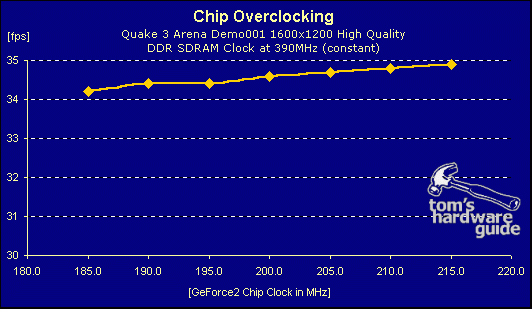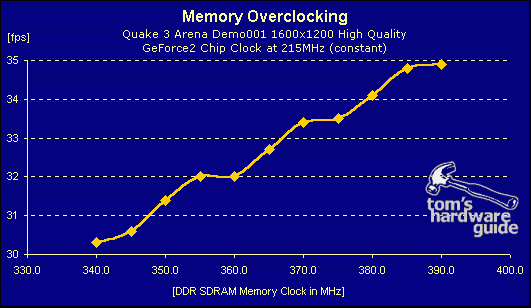Blue Wonder? The Guillemot/Hercules 3D Prophet II GTS
Overclocking Chip And Memory, Continued
In previous tests we already pointed out, that the memory is the actual bottleneck with GeForce2 graphics cards and not the graphics chip. Therefore we explored this relationship a little further. First we set the memory to a constant frequency. In case of the 3D Prophet II GRS this means 390 MHz - thus the maximum. Now we control the chip clock in small steps and measure the performance differences.
Here it already becomes obvious that the chip clock is not the bottleneck. Please note, that we had to 'stretch' the scale of the y-axis between 30 and 35 fps to actually even show the differences. Changing the chip clock at high resolutions has hardly any influence. All values settle between 34 to 35 fps.
And here is the bottleneck! As you can see, the performance differences are significantly larger. Increasing the memory clock at this resolution from 340 to 390 MHz results in a 15 percent performance gain for this card. nVidia could get impatient now. As long as these memory bandwidth problems have not been solved, even the best chip will always hit a wall. We hope that the memory industry is going to make some progress in the near future to eliminate this flaw.
Get Tom's Hardware's best news and in-depth reviews, straight to your inbox.
Current page: Overclocking Chip And Memory, Continued
Prev Page Overclocking Chip And Memory Next Page BX133-Overclocking/Stability

